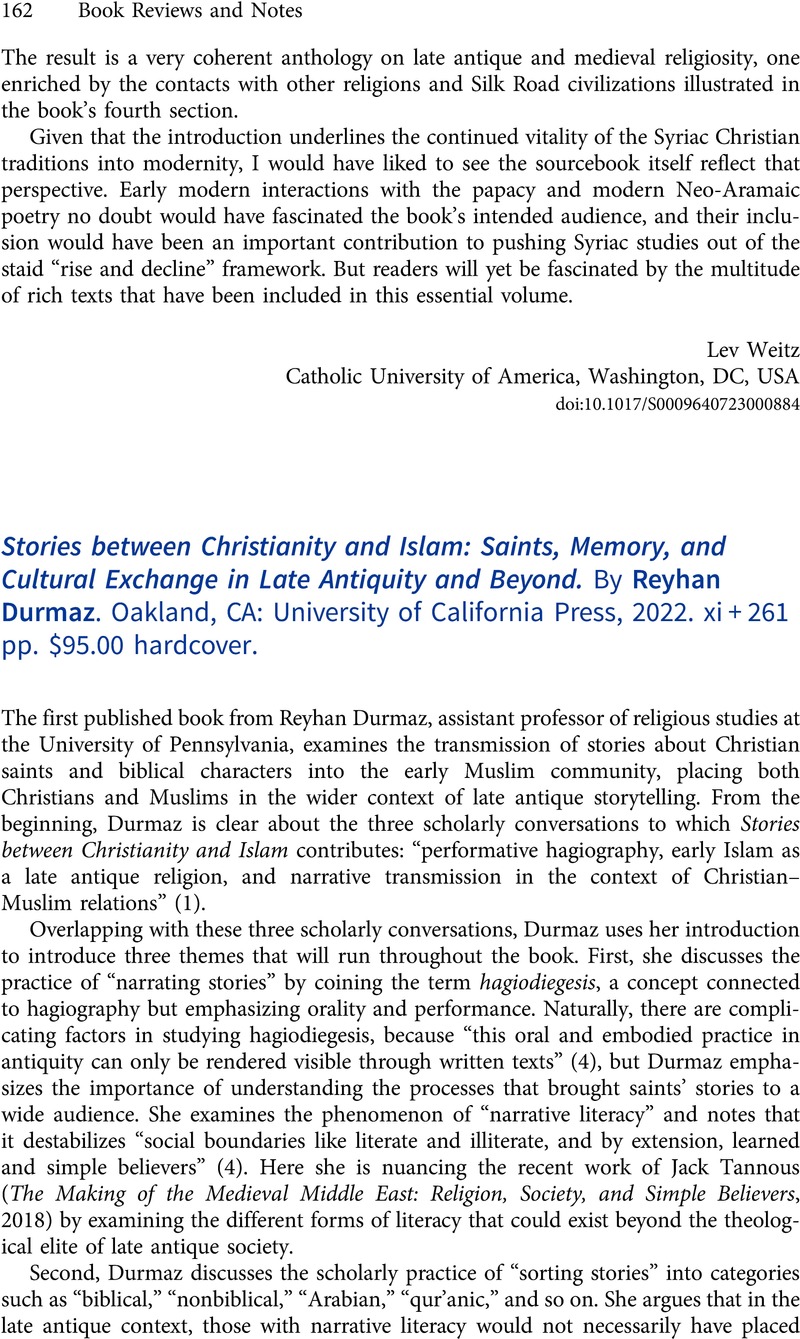No CrossRef data available.
Article contents
Stories between Christianity and Islam: Saints, Memory, and Cultural Exchange in Late Antiquity and Beyond. By Reyhan Durmaz. Oakland, CA: University of California Press, 2022. xi + 261 pp. $95.00 hardcover.
Review products
Stories between Christianity and Islam: Saints, Memory, and Cultural Exchange in Late Antiquity and Beyond. By Reyhan Durmaz. Oakland, CA: University of California Press, 2022. xi + 261 pp. $95.00 hardcover.
Published online by Cambridge University Press: 28 July 2023
Abstract
An abstract is not available for this content so a preview has been provided. Please use the Get access link above for information on how to access this content.

- Type
- Book Reviews and Notes
- Information
- Copyright
- Copyright © The Author(s), 2023. Published by Cambridge University Press on behalf of American Society of Church History


